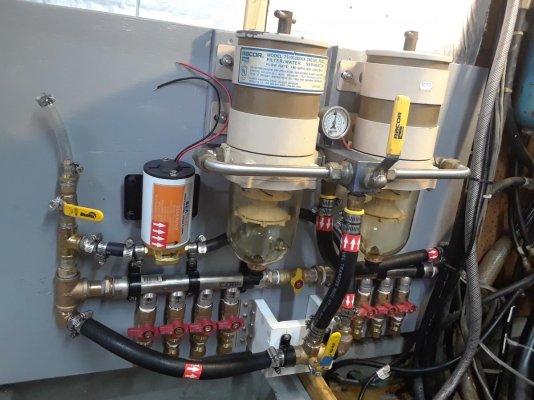Fletcher500
Guru
I have heard of people running their dual racers in parallel, both on, for some of the noted reasons.
I will defer to others regarding your cross over question.
The builder of our current boat doesn't like cross overs, so we don't have one. I have to periodically adjust the trim of the boat by changing the tank supply. Easy enough to do.
I will defer to others regarding your cross over question.
The builder of our current boat doesn't like cross overs, so we don't have one. I have to periodically adjust the trim of the boat by changing the tank supply. Easy enough to do.



